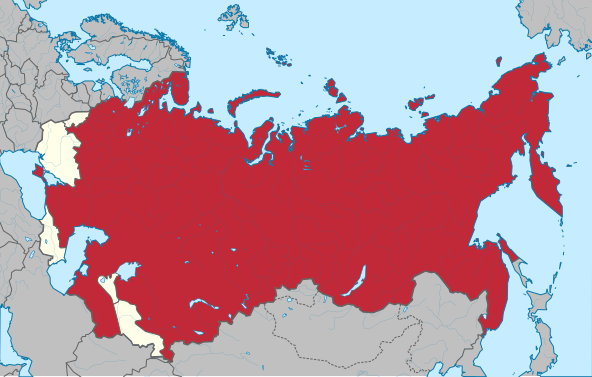The Russian Revolution, which began five years earlier in 1917, culminated in the formation of the Soviet Union on December 30, 1922. This event would reshape the politics of the twentieth century.
The Russian Empire was doing poorly in the early 1900s. Widespread famine that affected only the working classes had brought out a bitter anger directed at the Russian aristocratic classes. During a harsh crackdown on food riots, country-wide violence broke out. The Russian working people organized into “Soviet” forces to organize this violence into an effective revolution. (“Soviet” is a Russian word meaning “governing committee.”) These Soviets advocated replacing the corrupt Russian Empire with a communist republic based on the writings of Karl Marx, author of The Communist Manifesto.
When the revolutionaries had seized complete control, the various Soviets reorganized the former Russian Empire as the Soviet Union. Its government was controlled by the Communist Party, which also owned all of the industry and agriculture on behalf of its citizens.
Being based on communist ideals, the Soviet Union was ideologically opposed to America, Britain, and other Western capitalist nations. The result of this opposition was the Cold War, a state of perpetual near war between the Soviets on the one hand and America and its allies on the other. While the sides never directly clashed, they frequently fought indirectly, with each side supplying arms and money to the opposing sides of global conflicts in an attempt to expand their political and economic influence. The threat of nuclear war was constant. However, this all ended in 1991, when the Soviet Union was dissolved following a financial collapse.

